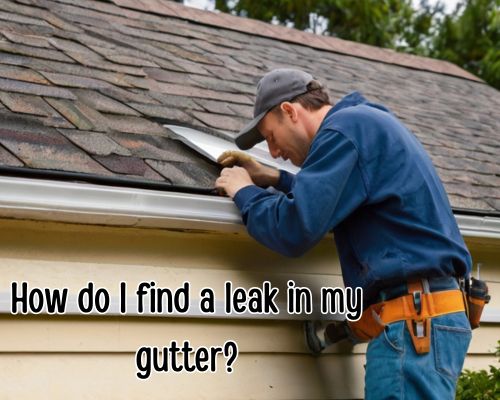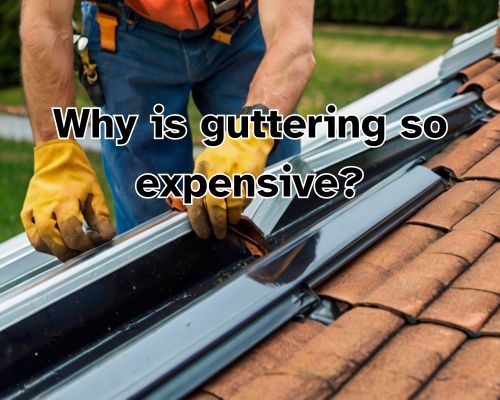How Do I Find a Leak in My Gutter? A Homeowner’s Guide for Melbourne, Australia
Gutters are the unsung heroes of your home’s roofing system, quietly directing rainwater away from your foundation and protecting your walls, windows, and landscaping from water damage. But what happens when they stop doing their job properly? You’re left asking: “How do I find a leak in my gutter?” This seemingly simple question is one that many Melbourne homeowners ask—especially during Victoria’s unpredictable wet seasons.

In this guide, we’ll walk you through the most efficient ways to detect gutter leaks, why it matters, the common causes in Melbourne’s climate, and how to address them before they snowball into costly repairs. Whether you live in Brunswick, Frankston, or the leafy streets of Camberwell, spotting a leak early could save you thousands in structural damage.
Why Gutter Leaks Are a Big Deal in Melbourne
Melbourne’s climate, classified as oceanic, brings heavy rain in winter and unexpected downpours throughout the year. Combine that with gum leaves from native eucalyptus trees or silt from frequent winds, and your gutter system can take a beating. Over time, wear and tear from UV rays, corrosion due to salty coastal air (particularly in areas like St Kilda and Brighton), and improper gutter slope can lead to leaks.
Ignoring even a small leak can result in:
- Soil erosion around your home’s perimeter
- Sagging fascia boards and roof damage
- Mould growth inside walls
- Water ingress into foundations or basements
So the sooner you identify a gutter leak, the better.
Signs You Might Have a Gutter Leak
Before you even climb a ladder, look for these telltale signs:
- Drips or Water Stains on the exterior walls
- Pooling Water near the base of your home after rain
- Discolouration or streaking on the gutters themselves
- Peeling Paint on the siding or under the eaves
- Visible Gaps or Cracks when inspecting from ground level
Step-by-Step: How Do I Find a Leak in My Gutter?
1. Inspect During a Rainfall (Safely)
There’s no better time to spot an active leak than during a light rain shower. With an umbrella in one hand and a keen eye, walk the perimeter of your home. Look for drips or water escaping from seams, joints, or mid-gutter areas.
Pro Tip: In Melbourne’s frequent drizzle, this method is convenient—just wait for a dry break to do repairs. You may also see gutter services for your needs.
2. Run a Hose Test
Can’t wait for rain? Use a garden hose. Start at the gutter’s high point and slowly run water through. Have a second person watch from below to identify leaks or odd water flows. Note any water that spills over the side or drips where it shouldn’t.
3. Climb Up for a Close Inspection
Once it’s safe and dry, use a sturdy ladder to get eye-level with your gutters:
- Check seams and joints—these are common fail points, especially in sectional gutters.
- Inspect corners and end caps for small cracks or gaps.
- Look for rust spots or pinholes in older metal gutters.
- Remove debris like gum leaves or bird nests that may be hiding the source of a leak.
If your home has a Colorbond roof, common in Melbourne suburbs like Doncaster or Glen Waverley, check where gutters meet rooflines as shifting panels may stress the gutter brackets over time.
4. Don’t Forget Downpipes and Flashing
Sometimes, what seems like a gutter leak is actually a damaged downpipe or faulty flashing where the roof meets the gutter. Listen for odd drips or splashes in the downpipe or inspect around flashing areas for water trails.
Common Causes of Gutter Leaks in Melbourne Homes
- Clogged Gutters: Eucalyptus leaves and dust are common clog culprits in Melbourne. Blockages create overflow that mimics a leak.
- Worn Seals and Loose Screws: Over time, UV and heat cycles degrade rubber seals and loosen gutter hardware.
- Rust and Corrosion: Older steel gutters, especially near the bay or in high-salt air zones like Port Melbourne, are prone to rust.
- Improper Slope or Installation: A poorly sloped gutter doesn’t drain correctly, leading to standing water and eventual corrosion.
Fixing a Gutter Leak: DIY or Pro?
If the leak is minor, a DIY patch may suffice:
- Silicone sealant can plug small holes or seal seams.
- Gutter repair tape works well in dry conditions.
- Replacement of short sections may be needed for larger cracks.
But for large leaks, multiple failure points, or complex roofing systems, hiring a local gutter professional (see gutter services) in Melbourne is wise. Many offer free roof and gutter inspections and will understand how to handle unique local challenges like tile roofs or weatherboard exteriors.
Look for licensed roof plumbers with experience in your suburb. Services in Carlton might focus on terrace homes with cast iron downpipes, while those in Rowville may be more accustomed to Colorbond and aluminum installations.
Prevent Future Leaks: Proactive Maintenance Tips
- Schedule Biannual Gutter Cleaning
Especially in autumn and spring. Use gutter guards if gum trees surround your property. - Install Gutter Guards
Mesh gutter covers prevent debris accumulation—popular among homeowners in suburbs like Eltham or Greensborough where trees dominate. - Get Annual Inspections
Many Melbourne roofing companies offer yearly checkups, often bundled with roof tile inspections. - Replace Aging Gutters
If your gutters are over 20 years old and showing signs of frequent failure, consider replacing them with modern, seamless options or corrosion-resistant materials.
Local Resources and Services in Melbourne
- Victorian Building Authority (VBA): Check licenses for roof plumbers and guttering professionals.
- Your Local Council: Offers green waste pickup and may provide advice for stormwater compliance.
- SES Victoria: Offers emergency support during flooding events from gutter overflow.
Final Thoughts: Spot It Early, Fix It Fast
So, how do I find a leak in my gutter? It begins with vigilance. With Melbourne’s climate, it pays to be proactive. A simple walk around your home, a hose test, and a ladder inspection can help you pinpoint issues before they turn into major damage. And whether you’re in the eastern suburbs or bayside, investing in regular gutter maintenance ensures your home stays dry and damage-free year-round.
When in doubt, always consult a local guttering expert to ensure a permanent fix tailored to your property type and suburb-specific needs.

